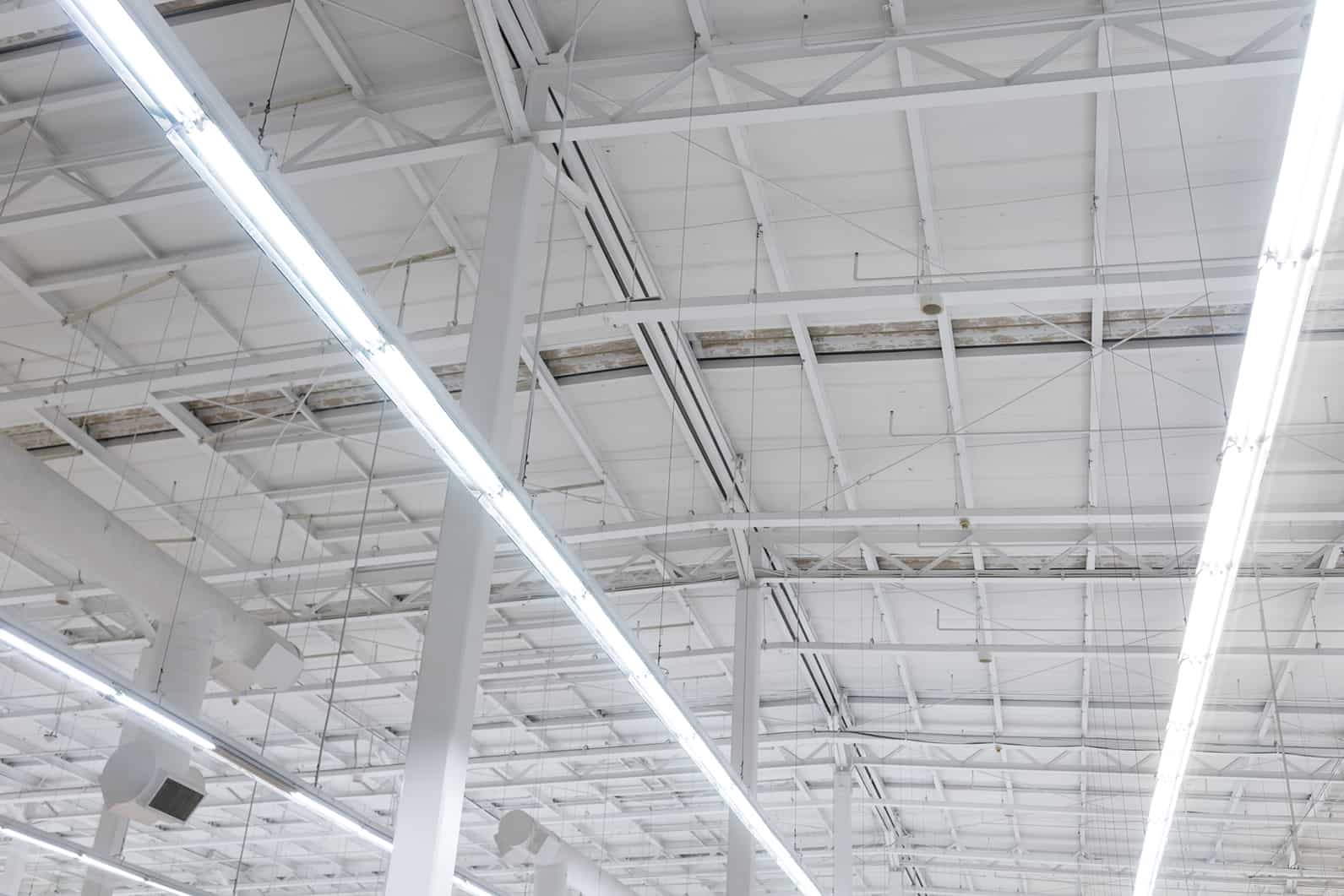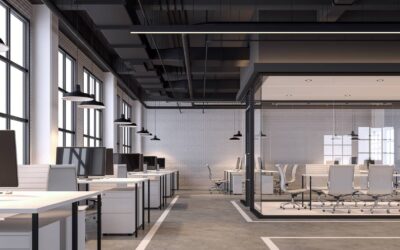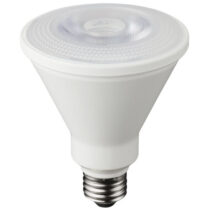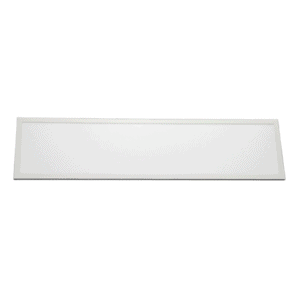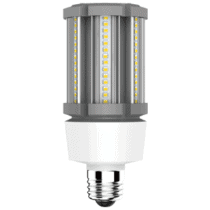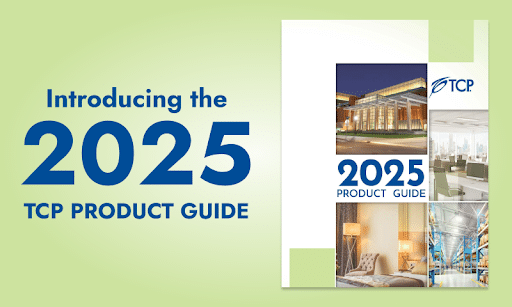7 Reasons to Swap Your Linear Fluorescents for LED T8 Tubes
While many see the benefits of LED technology, there are still some who are weary about switching their linear fluorescents with LED T8 tubes. But, no matter what the argument is, all construction project owners can agree that quality lighting generates revenue and supports the bottom line for organizational success. Technology that’s geared toward meeting a building owner’s business objectives can do any of the following:
- Improve look and feel by creating uniformity of illumination
- Reduce environmental impact and preserve natural resources
- Decrease maintenance and labor costs
- Increase energy savings
There are many things to consider with getting an efficient lighting system, such as proper light distribution and control settings. Construction project owners need to take a deep look at the performance characteristics of the lighting products installed in their facilities. This white paper will explain how LED T8 tubes can transform your space to help you maximize your revenue potential.
Reason #1: Quality Light Distribution
Light is about perception, and visual quality is about combining visual comfort with efficiency, which is a person’s ability to perform tasks involving vision. Visual comfort is related to the ease of seeing the task. While this part of lighting can be subjective depending on the audience type, LEDs provide intensity of illumination on the areas of interest and increase uniformity of illumination. Furthermore, color perception is the result of the light source interacting with the object, and color is responsible for the experience people get from vision. You can get many types of colors and create many different experiences with LED T8s.
Since LED lighting can give a facility more flexibility, it can help transform that experience for those who occupy a space. In fact, this is the expectation for today’s customers. Millennials are driving changes in the construction industry, and they are looking for sustainability, wellness, distinctiveness and local flavor. Tnooz, a website focused on travel and technology, states that 40 percent of U.S. hotel guests are between 18 and 36 years of age; and according to the 2014 Pew Research Center tabulation of the U.S. Census Bureau population projections, there are more baby boomers and millennials. Therefore, facilities will need to create intimate environments for millennials with adequate light levels for baby boomers. The best way to do this is with LED lighting.
Your lighting construction project’s objective is to create an experience for those who occupy the space by influencing a certain kind of behavior. It’s best to approach lighting projects strategically by looking at all the elements that go into effectively lighting a space. For example, LED T8s can produce similar color to a fluorescent, and they don’t have as many flickering issues, which can happen with a fluorescent. LED T8 tubes can help create quality lighting for your facility’s guests. The visual people get from seeing light creates stimuli for many of the senses, which can then influence a behavior.
Reason #2: Better Control Integrations
Lighting controls can enhance a space by making it comfortable for occupants. This is an important note because as regulatory standards evolve control systems are becoming more prevalent. For instance, Title 24 has mandatory requirements with controls. Every lighting space that is affected by Title 24 must have lighting controls based on the fixture type. LEDs can help meet the lighting power density (LPD). A building complies if the actual LPD calculated is no greater than the allowed indoor lighting power. The actual indoor lighting power of the building area is the total amount of watts. Also, if your control system isn’t doing what it’s intended to do, you could have a problem meeting Title 24 compliance. For example, fluorescents can be expensive to dim, and they don’t dim well. As you can see, overall, LEDs have better control integration.
While controls can reduce energy consumption and enhance a space’s function, the lighting product’s performance will depend on your application. Light levels can vary, along with the light source properties. Therefore, to get a higher performance control system, you’ll need to make sure to maximize system efficacy during typical dimming operation.
Reason #3: More Light Distribution
Some complain that LEDs have fewer advertised lumens than fluorescents, but it’s not a fair comparison. LEDs are directional by nature and will deliver the same footcandles as a fluorescent lamp with a higher advertised lumen value. You get a greater concentration of light exactly where you need it, because LEDs don’t waste lumens like a fluorescent. Always consider the necessary amount of footcandles when looking at lighting levels in your space.
Since LED T8 tubes produce more light, you might not need as many fixtures. It’s important to look at your lighting design and see if your fixtures are spaced out evenly for even and comfortable light distribution. As a result, you’ll notice that this can save you money since you’ll be using fewer fixtures.
Also, because fluorescent lamps don’t last as long, you could get burn outs, which are very unattractive in a facility. The more times you replace a lamp, the higher the chance you’ll have a replacement lamp not matching the fixture. On the other hand, LED T8 lamps don’t burn out; rather, they get dimmer as time progresses.
Reason #4: More Durability
LED T8 tubes are traditionally made using plastic, so they are shatterproof. However, in light of recent technology and manufacturing capabilities, LED T8s are now available with a glass outer envelope. Federal and state regulations require shatterproof lighting products, and shatterproof fluorescent tubes cost a lot up-front compared to standard fluorescents. Therefore, it’s best to invest in LED T8 tubes when considering all of the potential revenue gains, especially from those lower cost glass LED T8s.
Reason #5: Additional Energy Savings
LED T8 tubes are 30 percent more efficient than fluorescents. If your facility leaves its lights on for 24 hours per day, that could be a significant amount of energy savings. According to NEMA (National Electrical Manufacturers Association), 85 percent of U.S. sockets are for linear lamps. Imagine how much you can save in energy if you swap out your fluorescents for a more efficient option. The following are items to consider when measuring return on investment (ROI) on energy savings:
- Amount of hours lights are on each day
- Number of days per week lights are in use
- Number of existing and new fixtures
- Wattage amount of existing and new fixtures
- Current kWh rate
Check the DesignLights Consortium™ (DLC) Qualified Products List (QPL) to see energy efficient LED T8 tubes. Some manufacturers offer three-foot T8 tubes that are energy efficient, but you may not see them on DLC’s QPL since the organization doesn’t recognize the size.
Reason #6: Less Maintenance and Labor Costs
Because LED T8 tubes last longer, you’ll decrease the amount spent on maintenance and labor. Less money will be spent on workers replacing tubes and purchasing replacement product. This could be a big concern for those warehouse lighting projects because replacing a lamp is no small feat. It can take many workers with cherry pickers and U-Haul trucks.
Reason #7: Environmentally Friendly
LED T8s help with decreasing disposal costs since fluorescents have specific requirements for disposal to preserve the natural environment. Fluorescent tubes contain mercury, so it’s important to properly dispose of them. Contact your local lighting distributor or state agency about the best avenue to recycle your fluorescent tubes. The government also recognized the importance of recycling because of the mercury getting into the environment from landfills. Therefore, Restriction of Hazardous Substance (RoHS) was created to avoid this kind of pollution.
LED T8 tubes are an overall environmentally friendly option. They last longer than fluorescents, and they won’t need replaced nearly as often. LED T8 tubes not only contain no mercury, but they can create less heat, potentially reducing cooling costs.
Lighting accounts for an estimated 20 percent of electricity in commercial buildings, so it’s not a surprise that energy efficiency is one of the priorities for construction project owners. However, the cost of LEDs is the biggest obstacle. However, after considering potential for revenue gains from influencing a certain behavior in your facility that alone may make up the difference. The National Business Research Institute indicates that when a company retains five percent of its customers, profits can increase by 25 to 125 percent. Also, with utility rebates, tax incentives and energy savings, you could maximize your ROI potential; and since LED T8s produce more light directionally, you won’t need to operate as many fixtures. As you can see from these seven reasons, LED T8s make more sense than fluorescent tubes.
Related Articles
Workspace Lighting Design Trends
Whether you operate a corporate office or a small business workspace, your lighting solutions should be up-to-date with the latest trends. Modernizing your lighting solutions will not only improve employee productivity and performance, but you will also save money by...
The Impact of Energy-Efficient Lighting on Warehouse Productivity and Efficiency
Proper lighting is a critical factor in warehouse efficiency, safety and overall productivity. Workers in warehouses often operate heavy machinery, move large inventory and navigate expansive spaces – tasks that require optimal visibility. Poor lighting can lead to...
Industrial Lighting Challenges and Their Solutions
Industrial lighting presents unique challenges, from high energy costs and inconsistent light quality to frequent technical issues. These problems can impact productivity, safety, and operational efficiency. In this article, the experts from TCP will explore common...
